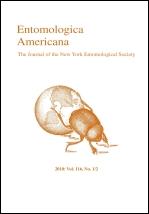The egg-laying behavior of female insects could directly benefit the mother, her offspring, or a combination of both. Periodical cicada (Magicicada septendecim (L.)) females oviposit in twigs in the forest canopy, and newly hatched nymphs fall to the ground, where they spend 17 years feeding on tree roots. If nymph dispersal from their mother's oviposition site is limited, then female oviposition site selection could influence offspring fitness and survival. Here, we show that there is no correlation between egg-nest density in the forest canopy and nymph density directly below. Although the extent of nymph post-hatching dispersal remains unknown, our findings cast doubt on direct benefits to offspring as an explanation for female oviposition site choice.
BioOne.org will be down briefly for maintenance on 17 December 2024 between 18:00-22:00 Pacific Time US. We apologize for any inconvenience.
How to translate text using browser tools
1 January 2010
Twig to Root: Egg-Nest Density and Underground Nymph Distribution in a Periodical Cicada (Hemiptera: Magicicada septendecim (L.))
Adrianne Smits,
John Cooley,
Erica Westerman
ACCESS THE FULL ARTICLE

Entomologica Americana
Vol. 116 • No. 1
January 2010
Vol. 116 • No. 1
January 2010
Egg-laying behavior
oviposition site choice
post-hatching dispersal




